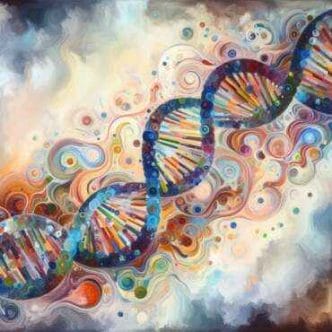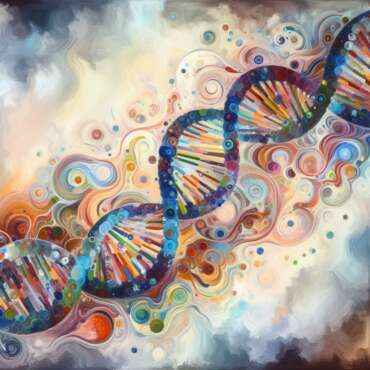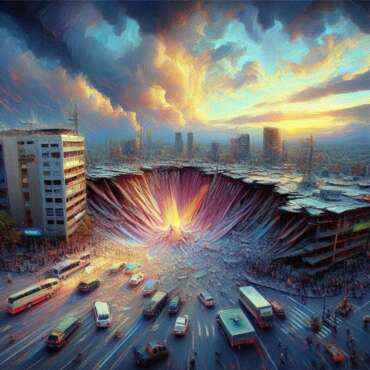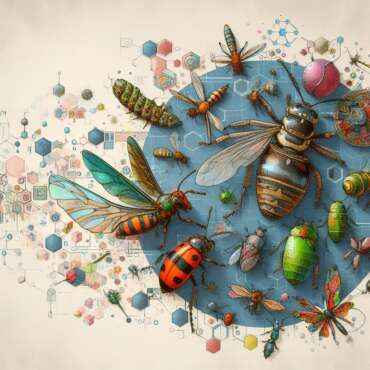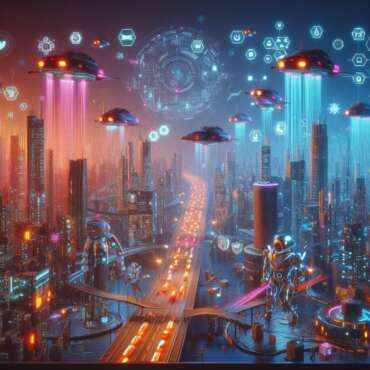In the relentless march of technological advancement, the need for data storage has grown exponentially. We generate data at an unprecedented rate, with no signs of slowing down. From high-definition videos and images to complex databases, our digital footprint is expanding. But as our hunger for data grows, so does the need for innovative storage solutions. Enter DNA, the ultimate data storage solution that nature has perfected over billions of years.
It’s estimated that one gram of DNA can store up to 215 petabytes (215 million gigabytes) of data. To put this into perspective, you could store the entire internet in a room no larger than a sugar cube!
The DNA Advantage
The Blueprint of Life, Deoxyribonucleic acid, or DNA, is the molecule that encodes the genetic instructions for the development, functioning, growth, and reproduction of all known living organisms. This remarkable molecule is a long chain composed of four nucleotide bases: adenine (A), thymine (T), cytosine (C), and guanine (G). These bases pair up (A with T, and C with G) to form the famous DNA double helix.
One of the most enticing aspects of DNA as a storage medium is its remarkable density. DNA is incredibly compact, packing an astonishing amount of information into a tiny space. In fact, it’s estimated that one gram of DNA can store up to 215 petabytes (215 million gigabytes) of data. To put this into perspective, you could store the entire internet in a room no larger than a sugar cube! Moreover, DNA is well-known for its stability and longevity. Fossils have shown that DNA can survive for tens of thousands of years. When stored in optimal conditions, it can last even longer. Unlike traditional digital storage media like hard drives or optical discs, DNA doesn’t suffer from degradation over time.
Finally, DNA data storage has an energy efficiency advantage. Storing data in DNA requires significantly less energy compared to traditional data centers filled with power-hungry servers and cooling systems. This is what makes DNA storage a greener alternative in the age of climate change.
How Does DNA Data Storage Work?
Turning DNA into a data storage medium involves encoding digital information into the four-letter alphabet of DNA bases. Here’s a simplified overview of the process:
-
Data Encoding: Digital data, typically in the form of binary code (0s and 1s), is translated into the language of DNA. In this encoding, 0 may represent one base (e.g., A or C), and 1 may represent another (e.g., T or G). This conversion is facilitated by specialized software.
-
Synthesis: Once the data is encoded, the corresponding DNA sequence is synthesized. Modern techniques like chemical synthesis or enzymatic processes make it possible to generate custom DNA sequences.
-
Storage: The synthesized DNA is then stored in a suitable format. This could be a small vial containing a liquid solution with the DNA molecules.
-
Retrieval: To retrieve the stored data, the DNA is sequenced back into its digital form using DNA sequencing technology. This reverse process effectively “reads” the DNA code and converts it into binary data.
 Image by Freepik
Image by Freepik
Challenges and Considerations
While DNA data storage holds tremendous potential, there are several challenges and considerations that must be addressed:
-
Cost: Currently, the cost of synthesizing and sequencing DNA is relatively high compared to traditional storage methods. However, as technology advances and economies of scale kick in, costs are expected to decrease.
-
Speed: Reading and writing data in DNA is a slow process compared to traditional storage media. This makes it more suitable for long-term archival storage rather than quick retrieval of frequently accessed data.
-
Error Rates: DNA is not immune to errors during synthesis and sequencing. Although error-correction techniques are improving, ensuring data integrity remains a challenge.
-
Ethical Concerns: The use of DNA for data storage raises ethical concerns, especially regarding privacy and potential misuse of genetic information.
-
Compatibility: Current computing systems are not designed to work with DNA as a storage medium. Developing compatible hardware and software is essential for practical implementation.
Real-World Applications
Despite the challenges, DNA data storage is making headway in various fields:
-
Archival Storage: DNA is an ideal choice for archival storage, where long-term preservation of data is crucial. Cultural heritage institutions, scientific research organizations, and even space agencies are exploring DNA storage for preserving valuable information.
-
Data Backup: Businesses are considering DNA storage as a backup solution for critical data, protecting it from disasters or cyberattacks.
-
Space Exploration: DNA storage could be the key to preserving humanity’s knowledge for future space exploration missions, where extreme conditions pose significant challenges to traditional data storage.
-
Medical Data: DNA data storage could revolutionize healthcare by securely storing patients’ genetic and medical information for future reference.
-
Environmental Conservation: Conservation efforts can benefit from DNA storage by preserving genetic information of endangered species and ecosystems.
The Future of DNA Data Storage
DNA data storage represents a promising frontier in the ever-expanding world of data management. It offers unprecedented data density, durability, and longevity. While challenges remain, the potential benefits are too significant to ignore.
As technology continues to advance, we can expect DNA data storage to become more practical and widespread. In fact, DNA may very well become the ultimate data storage solution, allowing us to bridge the gap between the digital and biological worlds. Researchers are actively working on improving the efficiency, cost-effectiveness, and speed of DNA synthesis and sequencing. Additionally, efforts to standardize DNA storage methods and develop compatible technologies are underway. In the not-so-distant future, we might see DNA-based storage solutions integrated into our everyday lives. Imagine carrying your entire digital life on a piece of DNA in a small vial, safely preserved for generations to come. It’s a remarkable prospect, one that showcases the power of nature’s own data storage solution.
____________
Written By: JK Pandey
